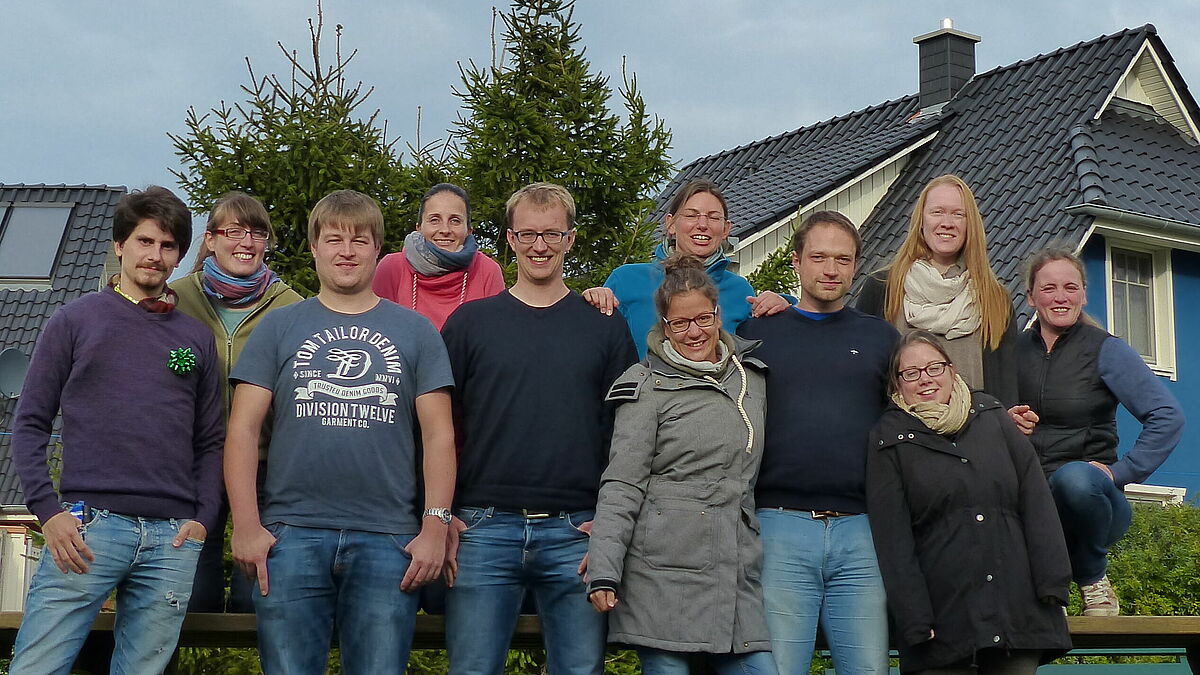Phosphorus-Campus
Scientific campus for phosphorus research Rostock

The problem
Phosphorus is an essential nutrient for all living organisms on our planet. However, the current use of this resource is not sustainable and an end to the phosphorus reserves is foreseeable. In order to be able to continue the use of this precious resource of phosphorus in the future, an adjustment concerning the use of phosphorous as well as an efficient recycling is necessary.
An interdisciplinary team of scientists from different institutes of the Leibniz Association as well as the University of Rostock under the leadership of the Leibniz Institute for Baltic Sea Research Warnemünde (IOW) is trying to answer different questions concerning the topic of Phosphorus research.
These include questions on the fate and distribution of phosphorus in the environment, but also on efficient use in agriculture or animal breeding, as well as the technical and biological possibilities of phosphorus recovery (P-recovery) and phosphorus recycling (P-recycling).
The professorship aquaculture and sea ranching investigates the nutrient phosphorus during aquaculture production in aquaponic systems (for more information on aquaponics please click here).
Especially in aquaponics the understanding of nutrient cycles and balances is central. In this context, however, there is still a great need for research concerning phosphorus:
- How exactly do fish use phosphorus during their culture?
- In which form and in which fractions do they excrete phosphorus-containing compounds to the surrounding waters?
- Which phosphorus compounds and in which concentrations are best for plant production?
The approach
In order to recycle phosphorus as efficiently as possible in aquaponics, first of all it must be clear, how its distribution in the system is influenced by varying circumstances.
Therefore, a comprehensive balancing of existing phosphorus compounds in the system has to be carried out and tested under differently configured production conditions in the FischGlasHaus.
Based on the results of the assessments, research is being carried out on the development of practice-oriented applications to increase the efficiency of phosphorus in aquaponic systems.
The methodology
Applying qualitative and quantitative methods, the fate of phosphorus is investigated and recorded during the aquaponic production of African catfish (Clarias gariepinus) and crops in the FischGlasHaus of the University of Rostock.
Using colorimetric analysis methods, the dissolved nutrient fractions (including phosphate) in the water are investigated.
Mass spectrometry and optical emission spectrometry are used to determine the elemental composition of the solids.
The distribution of phosphorus compounds in the liquid and solid phase is analyzed under different production conditions, such as different fish population densities.
The detailed analysis of the liquid and solid phase allows it to gain valuable insights into the phosphorus behavior in an aquaponic system.
In further steps, possibilities are explored to manipulate the phosphorus content of the entire system in such a way that the existing raw materials can be optimally used for fish and plant production in the system.
Status
So far during the project, the dissolved fractions of the phosphorus nutrient for various production intensities were analyzed. The balance is currently being expanded to include the fraction of the resulting solids.
Furthermore, experiments on the effects of increased nutrient concentrations in water (including phosphorus) on fish and plants have been successfully carried out.
